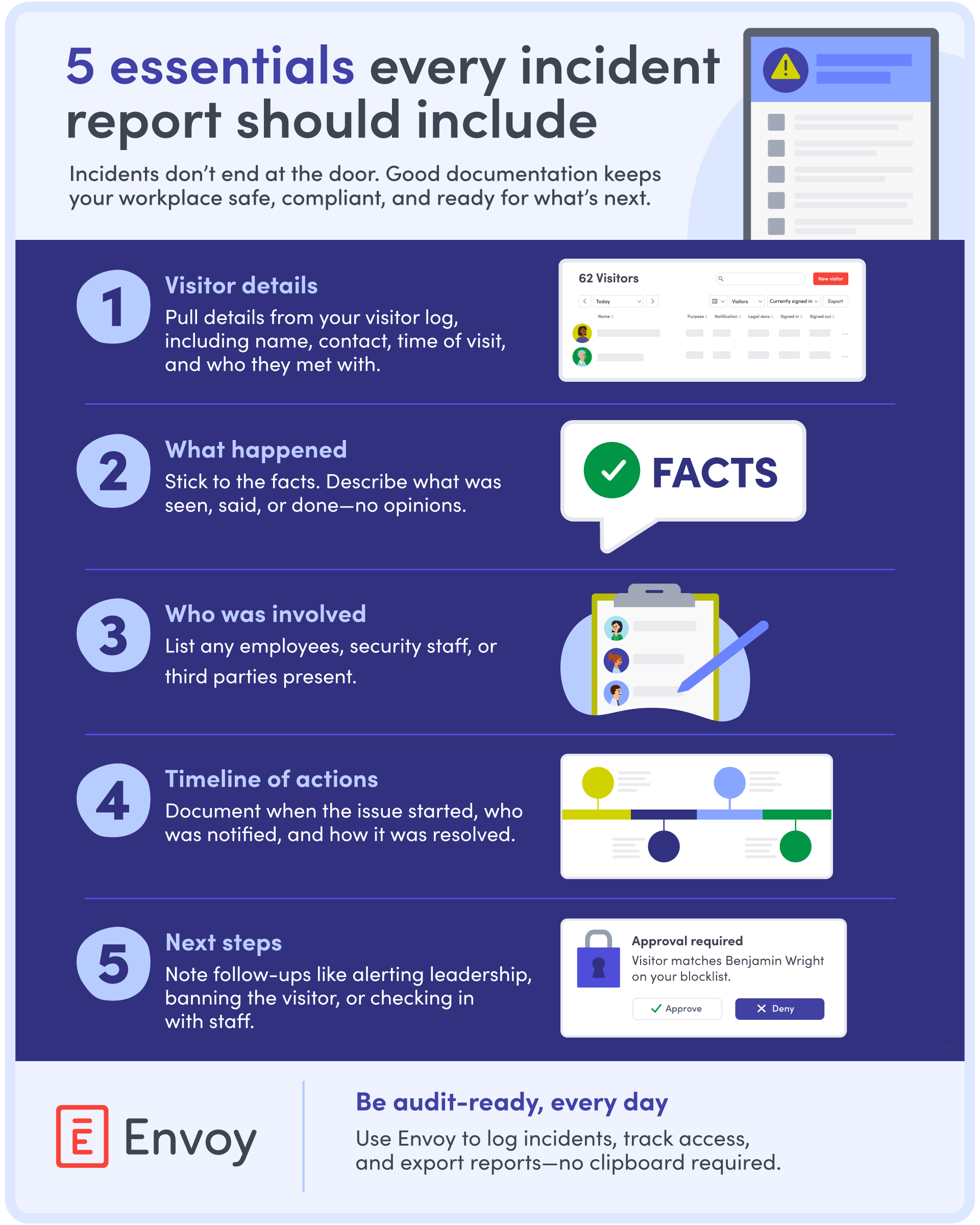The front desk is more than a welcome point. It’s also your workplace’s first line of defense. With hybrid schedules and evolving threats, knowing who’s coming and going is harder than ever. The good news? A few smart updates can dramatically improve your front desk security without sacrificing a warm welcome. Start with these five steps.
Step 1: Screen visitors before they arrive
The best way to protect your workplace? Be prepared before anyone even shows up. Start by screening visitors in advance. Create a short list of questions that set clear entry requirements. That way, your team knows who to expect and can flag anyone who doesn’t meet your standards. Screening also helps you spot anyone who shows up on internal or third-party watch lists.
Managing all this manually can get messy fast. A visitor management system (VMS) can help you automate screenings and stay organized.
Step 2: Keep a detailed visitor log—or risk gaps in visibility
Once you've set expectations for who can enter, track who actually shows up.
A visitor log should capture the basics: name, contact info, reason for visiting, and anything else your team needs. If something comes up later, you’ll have the details you need to follow up or escalate.
This isn’t just about safety—it’s also a compliance requirement under regulations like ITAR, EAR, and C-TPAT.
Step 3: Use custom badges to identify every visitor
Make it easy to tell at a glance who’s a guest. One of the easiest and most effective ways to keep your people and spaces safe is with a custom badge system.
Print badges automatically when someone signs in, or pre-print them for visitors who register in advance. You can include their photo, visit purpose, timestamp, or color-code badges based on visit type—like green for interviews, blue for meetings.
Pair your badge process with a clear badge policy. That gives your front desk team the authority to act when they spot an unauthorized guest.
Step 4: Be ready to turn away unauthorized visitors
You’ve screened your visitor, logged their details, and printed their badge. Now you need to be ready for when someone shows up who shouldn’t be there.
Make sure your front desk team has a clear process for turning people away. That includes knowing how to de-escalate situations and when to call for backup.
Here’s a quick framework:
- Explain your visitor policy and how it’s been violated
- Ask the visitor to leave
- Bring in another team member if needed
- Know who to call if things escalate (e.g., onsite security, your facilities manager, or local law enforcement)
- Document the incident and alert internal teams
No one wants to turn people away. But having a plan makes the process less stressful—and gives your team the confidence to handle it calmly and consistently.
Step 5: Train your team to document every incident
Just because the incident’s over doesn’t mean the work is. Documentation is key. Make sure your team knows how to write clear, consistent reports. Not sure where to start? Here are five things every report should cover:

Good documentation keeps everyone on the same page and helps you improve your security posture over time. It also shows your team you’ve got their back when something unexpected happens.
—
Your workplace is only as secure as its front desk. With the right systems in place—from screenings and sign-ins to incident response plans—you create a safer, smoother experience for everyone who walks through the door.
Want to know how your workplace stacks up? Download our State of Workplace Security report to see how other teams are navigating new threats, evolving tech, and rising expectations.
Read more
Searching for a visitor management solution? Learn what to look out for and how to choose the best tech for your team.
Managing your space well doesn’t have to be difficult. But if you want to be successful, you need the right approach.
A well-run workplace can set your team up for success. Learn why workplace management matters and how to do it right.
Workplace security is critical to the future of your business. Learn why it matters, what threats to watch for, and how to strengthen your workplace security plan.
In this post, we’ll explore what workplace compliance is and how to build a compliance culture for your organization.
With more folks sending personal packages to the workplace, having a sound mailroom management system in place is key.









